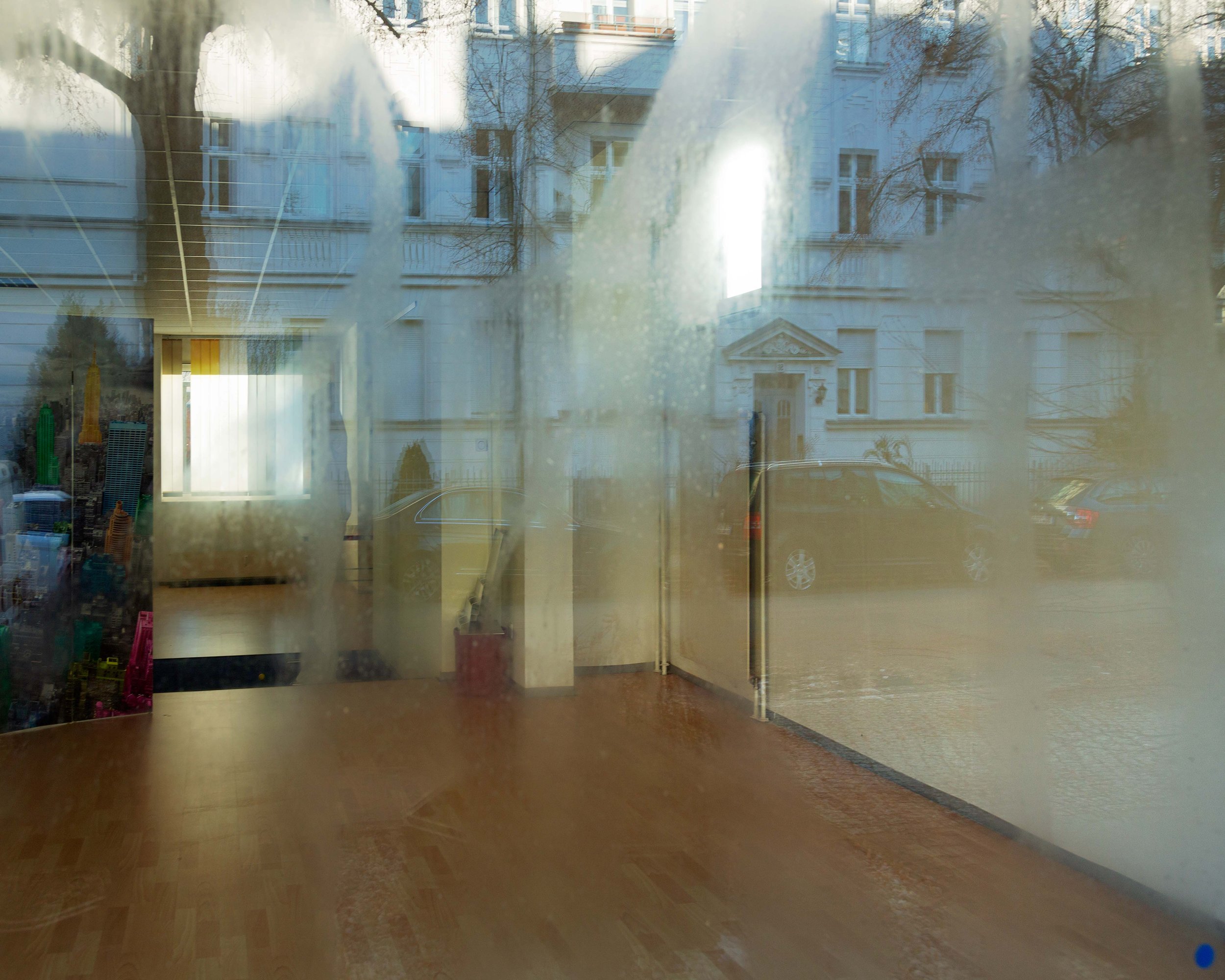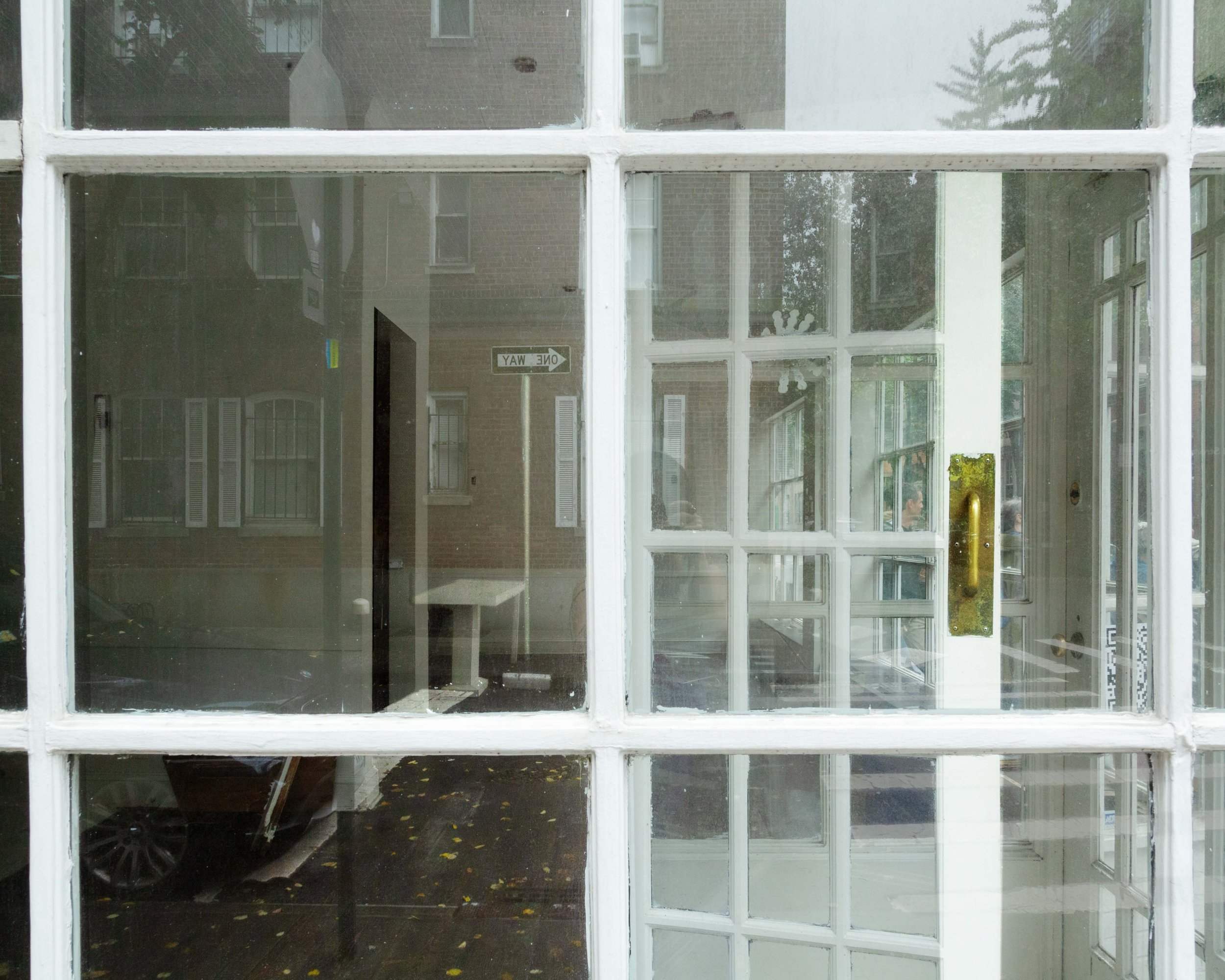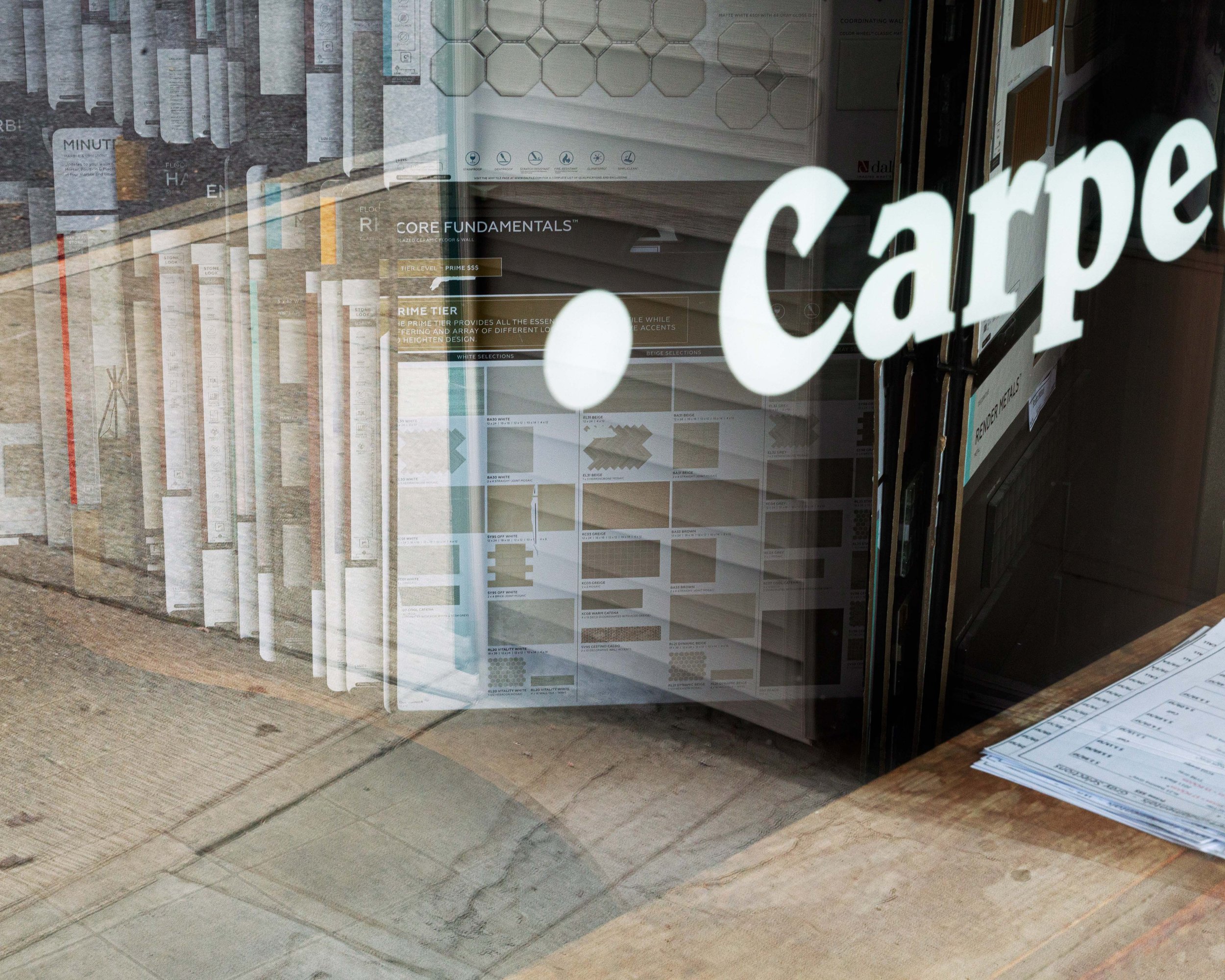





Statement
My photographic project “Fermata” documents the urban landscape altered by the reflections of glass surfaces. Glass surfaces are interruptions of natural looking. Used in the display windows that actively draws the attention, glass surfaces have conditioned the passersby to constantly look at the constructed spaces fluxed with information. It results in a feeling of disorientation. The project explores the uncanniness of the visual tunneling through the glass structures. It questions if our senses synchronize to the pace of contemporary urbanization.
I like to photograph spaces that are registered into the daily sights: shop fronts, hallways and parking lots. I notice the glass surfaces in these places that scatter the visual zone of focus, creating different visual planes, mingling with the graphic information within and outside. While I play with angles and structures, I find myself photographing corner shop fronts as the angular reflections are magnified and engage most with the scene behind me. Through vision, I spatially tunnel between different spots: inside the shop, the shop front, and what is behind me.
Using these glass surfaces as intermediaries of sorts, I orchestrated my photographs through the reflections, overlapping the street view with the inside space. Through dissolving the physical distance in the two-dimensional photographs, I fixate the viewers into the experience of visual tunneling. The space and time were fixed in the moment of the frames, but the photograph still lacks a sense of clarity. They trap the viewers into circulating their visions, pushing the vision back and forth spatially. Inspired by the tradition of Trompe-l'œil, I delineate the illusions of the glass surfaces in the post production process, making alterations to the different quadrants within the image.
Historically, the use of glass surfaces as the device in photography is concurrent with capitalist culture. Eugène Atget photographed display windows in “Old Paris”, with mannequins inside the shops dressed in modern attire and Parisian street view on the outside. Lee Friedlander’s “Reflection and Shadow” captured glass surfaces in American cities in relation to his way of seeing the world. Nathan Lyons “After 911” shows the aftermath of the tragedy through the empty window-shops falling apart. The post–World War II economic expansion shifted the social geography of the cities, glasses were used extensively at the storefront to attract the pedestrians’ attention. It affected ways that people look being in urban spaces, as they engage with spectacles inside of the glass surfaces as well as the physical world behind them. This way of structuring expands spatially in contemporary context, no longer limited to the urban spaces and their peripheries.
The project questions the velocity of contemporary urbanization with its creation of visual barriers and tunnels. Are we conditioned to passive onlookers and consumers, without the knowledge of such loss of agency? How does visual tunneling affect our spans of attention? Do the natural realm of senses still hold effective today to those synthetic visions?